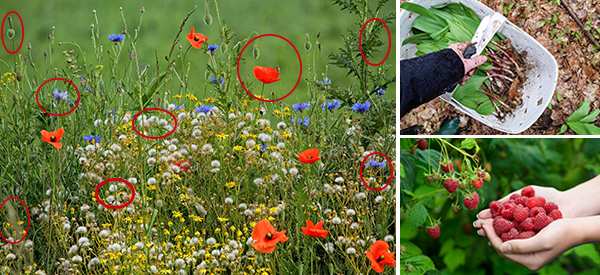
25 Medicinal Plants You Can Forage Right Now
Summer is here! We can now see numerous plants brimming with life. From flowers to weeds and everything in between, there are many things you can use for medicinal purposes. All you have to do is to know which plants to pick and how to use them. This article will highlight 25 medicinal plants that you can forage right now! So read on and see how amazing Mother Nature is, especially in spring and summer!
Dandelion (Taraxacum officinale)
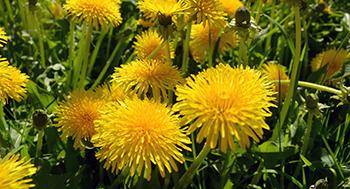
You can find dandelions sprouting just anywhere. Dandelions may be weeds, but they are beautiful with their yellow flowers.
Dandelions have basal leaves that grow at the bottom of the stem. The leaves are also hairless and produce a milky sap.
Benefits: Dandelions are one of the most beneficial weeds out there. They are highly nutritious and a great source of Vitamins A, C, K, and E. They also contain minerals such as magnesium, calcium, potassium, and iron.
How to use it: You can toss dandelion blooms on your salads just like any other fresh salad ingredients you have! Or you may also make dandelion tea. Simply add ½ cup of dandelion petals in 1 cup boiling water. Steep for 5-10 minutes, and strain. Viola! You can now drink your dandelion tea, and you may even sweeten it with raw honey if desired.
More recipes here:
- How to Make Dandelion Bread
- How to Make Dandelion Jelly
- Dandelion Syrup For Cholesterol and Blood Sugar Control
- Dandelion Root Infused Honey for Immunity
Daylily (Hemerocallis)
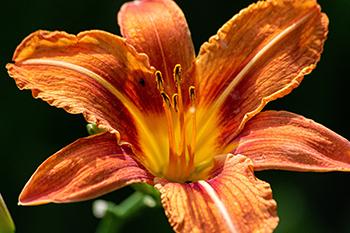 Though daylilies are native to Asia, they are known worldwide and are cultivated by many people. You can also find daylilies along roadsides often. There are over 70 types of daylilies. But the most common blooms are yellow and orange. You can best differentiate a day lily from a true lily because it has strapping leaves from the base of the plant and has multiple stems.
Though daylilies are native to Asia, they are known worldwide and are cultivated by many people. You can also find daylilies along roadsides often. There are over 70 types of daylilies. But the most common blooms are yellow and orange. You can best differentiate a day lily from a true lily because it has strapping leaves from the base of the plant and has multiple stems.
Benefits: The orange day lily, in particular, is used as a diuretic and laxative.
How to use it: Day lily flowers are edible. Many people love to eat them battered and fried. Some would even go for the first shoots and forage these to add on their favorite stir-fries.
Chicory (Cichorium intybus)
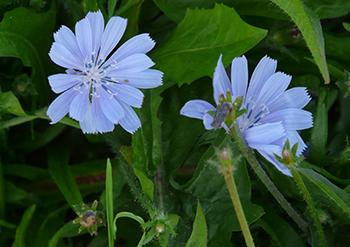 You can see the sky-blue flowers along with open fields and pathways in many places around the world. A native of Europe, this wild plant has made its way to China, Australia, and North America, among many others.
You can see the sky-blue flowers along with open fields and pathways in many places around the world. A native of Europe, this wild plant has made its way to China, Australia, and North America, among many others.
Benefits: Chicory has many health benefits such as easing constipation and upset stomach. It is also used to protect the liver and gallbladder.
How to use it: Chicory leaves can be eaten like celery or tossed in your salads. Others will forage the roots and leaves, clean and boil them to eat since it helps reduce the bitter taste. Additionally, you can dig the roots at the end of the summer season, then roast and grind them as a substitute for coffee. Some will even mix chicory root with roasted dandelion root to make a wonderful caffeine-free substitute for coffee.
Related: Everything You Need to Know About Chicory
Common Milkweed (Asclepias syriaca)
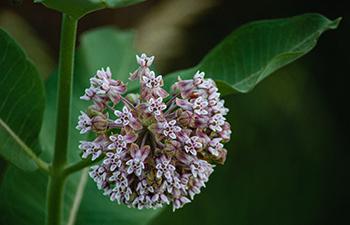 Did you know that milkweed has long been used by Native Americans for its nutritional and medicinal benefits? The milkweed is very common all throughout Canada as well as in the Central and Eastern parts of the United States. You can distinguish milkweed by its purplish-pink flower that forms a cluster like a sphere at the top of a long erected stem. The large leaves are oval.
Did you know that milkweed has long been used by Native Americans for its nutritional and medicinal benefits? The milkweed is very common all throughout Canada as well as in the Central and Eastern parts of the United States. You can distinguish milkweed by its purplish-pink flower that forms a cluster like a sphere at the top of a long erected stem. The large leaves are oval.
How to use it: The sap helps remove warts when applied topically, while the roots can be chewed on to cure dysentery. Moreover, you can make an infusion from its roots and leaves to help remedy cough, asthma, and typhus fever. You may also steam or sauté young shoots or add the seed pods in soups. But take note, avoid using a mature plant as the sap may cause irritation or illness.
Fox Grape (Vitis labrusca)
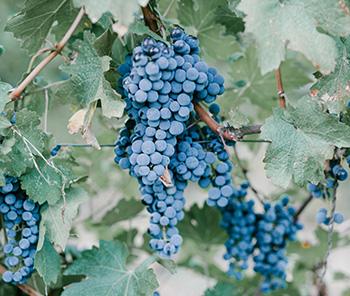 Fox grape is a variety of wild grapes common to North America. You can easily identify fox grapes from other varieties because they have larger fruits and seeds. The fruits of the fox grape mostly size up to 1/2” or more. The leaves of fox grape have woolly hairs on the undersides and have deep narrow lobes.
Fox grape is a variety of wild grapes common to North America. You can easily identify fox grapes from other varieties because they have larger fruits and seeds. The fruits of the fox grape mostly size up to 1/2” or more. The leaves of fox grape have woolly hairs on the undersides and have deep narrow lobes.
Benefits: It has immune-boosting properties and also improves cardiovascular health. It also helps lower blood pressure and even lowers down the risk for breast cancer.
How to use it: To avail of the benefits of this healthy medicinal plant, you simply have to eat the fruit as a snack or combine it with your salads. Others make use of the fruit as a primary ingredient for their pies. Meanwhile, young leaves and tendrils are also cooked and eaten.
Click Here for a Complete Guide to 400 Wild Plants That You Can Forage For
Horseweed (Erigeron canadensis)
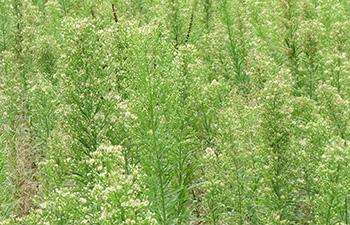 Horseweed is native to Canada and the United States. However, you can also find them across Europe, Central Asia, Japan, China, Australia, among others. They prefer being under the sun a lot, so you’ll probably spot them in open fields, roadsides, pastures, and other vacant lots. It has a stiff and hairy stem with green and white flower heads in clusters. Each flower head has a lot of greenish-white and yellow florets.
Horseweed is native to Canada and the United States. However, you can also find them across Europe, Central Asia, Japan, China, Australia, among others. They prefer being under the sun a lot, so you’ll probably spot them in open fields, roadsides, pastures, and other vacant lots. It has a stiff and hairy stem with green and white flower heads in clusters. Each flower head has a lot of greenish-white and yellow florets.
Benefits: It is helpful in the treatment of diarrhea and hemorrhoids. It also aids menstrual irregularities and bladder problems.
How to use it: Forage the flowers and the green parts of the plants before they bloom. You can use horseweed as a spice when cooking. You may also make a tea infusion by steeping 1 tsp of leaves in 1 cup of water for 30 minutes.
Elderberry (Sambucus canadensis)
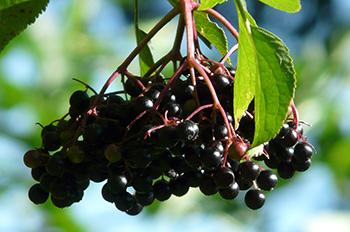 Elder trees often grow in wastelands, woodlands, or hedgerows. However, you can also spot some of them along roads and even in your gardens! It is native to North America but also grows in some parts of Central America and Mexico. Elderberry is a large shrub that can grow up to 10 ft tall. It has slender yet pointed leaves. It also has umbels of white tiny blossoms so it is simple to spot them.
Elder trees often grow in wastelands, woodlands, or hedgerows. However, you can also spot some of them along roads and even in your gardens! It is native to North America but also grows in some parts of Central America and Mexico. Elderberry is a large shrub that can grow up to 10 ft tall. It has slender yet pointed leaves. It also has umbels of white tiny blossoms so it is simple to spot them.
Benefits: Elderberries are best known to treat flu symptoms, inflammation, and stress.
How to use it: Make an elderberry tea by adding water, dried elderberries, and a cinnamon stick to a saucepan. Heat until the water boils, and lower down to medium-low to simmer for 15 minutes. Let the tea cool for 5 minutes, strain, and enjoy!
More recipes here:
- How to Infuse Honey with Elderberry
- Elderberry Syrup With Echinacea and Goldenseal
- How to Make Immune Boosting Elderberry Syrup
Red Raspberry (Rubus spp.)
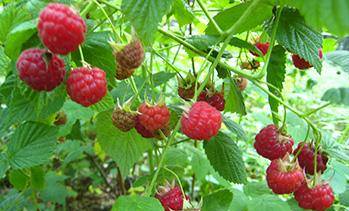 Another plant that you can forage right now is raspberry. The plant is native to northern Asia, Europe, and other temperate regions. But you can also find them in the United States and Canada during the summer months. Red raspberries have white flowers and oval-shaped leaves with ragged edges.
Another plant that you can forage right now is raspberry. The plant is native to northern Asia, Europe, and other temperate regions. But you can also find them in the United States and Canada during the summer months. Red raspberries have white flowers and oval-shaped leaves with ragged edges.
Benefits: Raspberries are rich in fiber, antioxidants, vitamins, and minerals. They also help manage blood sugar, weight, and arthritis. Pregnant women also benefit from drinking red raspberry tea leaf as it helps shorten labor time.
How to use it: You can add fruits to your cereals or oatmeals. You may also make a red raspberry infusion by filling a large mason jar halfway with tea leaves. Pour boiling water over the leaves, and cover with a lid. Let it stay overnight, and strain using cheesecloth the following morning. Store in a mason jar or large glass bottle inside the fridge. This infusion can last for 3-5 days when stored properly. Drink 1 cup of tea daily for best results.
Related: How To Make Your Own Raspberry Vinegar
Bee Balm (Monarda spp.)
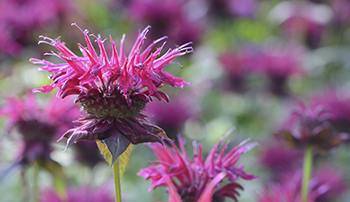 Native to North America, the daisy-like flowers of bee balm beautifies the surroundings with their variety of colors. The tubular petals can be in different shades of white, red, purple, and pink.
Native to North America, the daisy-like flowers of bee balm beautifies the surroundings with their variety of colors. The tubular petals can be in different shades of white, red, purple, and pink.
Benefits: This medicinal plant has antimicrobial properties that help soothe colds and flu. It further aids in bloating, indigestion and nausea. Topically, bee balm can help treat stings, scrapes, and rashes.
How to use it: Aside from making a bee balm tea, you can make use of the leaves as herbal steams. Simply add dry leaves to steaming water or your bath and inhale the steam. This can help clear your nasal passages.
Red Clover (Trifolium pratense)
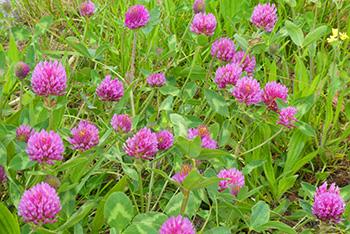 Red clover is available in many parts of the world though it is a native of Northwest Africa, Western Asia, and Europe. You can find the plant growing on its own in fields, yards, roadsides, and many other places. It has pink to purple flowers; long, thin, and hairy stems; and trifoliate leaves.
Red clover is available in many parts of the world though it is a native of Northwest Africa, Western Asia, and Europe. You can find the plant growing on its own in fields, yards, roadsides, and many other places. It has pink to purple flowers; long, thin, and hairy stems; and trifoliate leaves.
Benefits: This herb improves liver and bone health, reduces menopausal symptoms, and promotes healthy skin and hair.
How to use it: You can make a red clover tea by adding 4 grams of dried red clover flowers to 1 cup of boiling water. Steep for 5-10 minutes, strain, and drink. Do not exceed over 3 cups of tea per day.
Common Mallow (Malva neglecta)
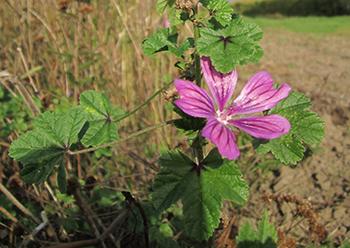 Common mallow likes sunny places and can be found in many parts of the world, including the United States. Due to its ability to adapt to various soils, you can find them in a lot of places such as abandoned fields, croplands, roads, pathways, and yards. The plant has low spreading branches, flowers have 5 white or pink-purplish petals with notched tips. Meanwhile, the leaves have a heart-shaped base. The leaves also have 5 to 7 rounded lobes and will become slimy when torn.
Common mallow likes sunny places and can be found in many parts of the world, including the United States. Due to its ability to adapt to various soils, you can find them in a lot of places such as abandoned fields, croplands, roads, pathways, and yards. The plant has low spreading branches, flowers have 5 white or pink-purplish petals with notched tips. Meanwhile, the leaves have a heart-shaped base. The leaves also have 5 to 7 rounded lobes and will become slimy when torn.
How to use it: The young leaves of the mallow can be added to salads, either raw or cooked. You can also make use of it as a stew thickener. Additionally, the flowers can be used as a substitute for capers.
Stinging Nettle (Urtica dioica)
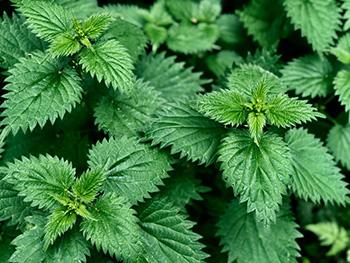 One of the best plants to forage is stinging nettle. People may hate this weed, but it actually provides many uses. It thrives in moist, nitrogen-rich soil, and can be found in different parts of the globe. The leaves are ovate or cordate in shape with varying widths. The small greeny-white flowers form in clusters hanging from the axil of the leaf. The weed is loaded with nutrients, minerals, and amino acids.
One of the best plants to forage is stinging nettle. People may hate this weed, but it actually provides many uses. It thrives in moist, nitrogen-rich soil, and can be found in different parts of the globe. The leaves are ovate or cordate in shape with varying widths. The small greeny-white flowers form in clusters hanging from the axil of the leaf. The weed is loaded with nutrients, minerals, and amino acids.
Benefits: It helps reduce inflammation, lowers blood pressure levels, and manages sugar levels.
How to use it: To forage the weeds, make sure that you are wearing gloves since they can sting you. It is best to harvest only the top 5 leaves of each stem. Clean with running water before placing it in a large pan to boil. Once boiled, the nettle will lose its sting, which makes it edible and useful for many recipes you want to put it on.
Related: How to Cook Spring Nettles
Broadleaf Plantain (Plantago major)
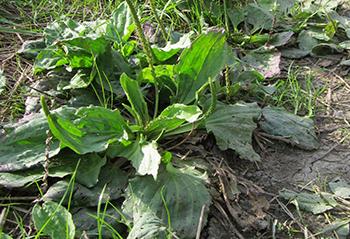 Not to be confused with the plantain fruit, which is a type of banana, the plantain weed can be found in many parts of the world. However, it is native to Central Asia and Europe. To distinguish this plant when foraging, look for large oval-shaped leaves that grow at the base of the plant and its flower spike. Very small flowers attach to these spikes, and each contains 4 transparent petals.
Not to be confused with the plantain fruit, which is a type of banana, the plantain weed can be found in many parts of the world. However, it is native to Central Asia and Europe. To distinguish this plant when foraging, look for large oval-shaped leaves that grow at the base of the plant and its flower spike. Very small flowers attach to these spikes, and each contains 4 transparent petals.
Benefits: Plantain is a rich source of vitamins and minerals such as A, C, K; and calcium, iron, and magnesium. It further has antimicrobial, anti-inflammatory, antibacterial, and astringent properties.
How to use it: Young plantain leaves are added to salads, boiled or steamed. Some also add them to soups just like they would for any other dark green leafy vegetables. You can also partially chew the leaves and apply them as a poultice for rashes, bug bites, and scrapes.
Related: How to Make Anti-Inflammatory Band-Aid Using Plantain
Yarrow (Achillea millefolium)
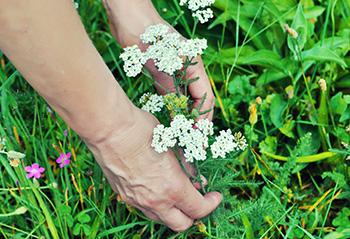 We can easily find yarrow in temperate climates worldwide. It has leaves that look like feathers. A flower stalk can grow between 2-3 feet tall and has a cluster of tiny daisy-like flowers. Wild yarrow flowers are often seen in white, and sometimes pink. However, people growing the said plant can produce yellow, orange, and red flowers. The yarrow plant also has a fresh pine needle scent that can help you identify them more easily.
We can easily find yarrow in temperate climates worldwide. It has leaves that look like feathers. A flower stalk can grow between 2-3 feet tall and has a cluster of tiny daisy-like flowers. Wild yarrow flowers are often seen in white, and sometimes pink. However, people growing the said plant can produce yellow, orange, and red flowers. The yarrow plant also has a fresh pine needle scent that can help you identify them more easily.
Benefits: This plant has many medicinal uses as it has astringent, antiseptic, and anti-inflammatory properties among others. It also helps in blood coagulation, menstrual cycle, circulation, and digestive health.
How to use it: Make a yarrow styptic powder to stop bleeding by applying it directly to the wound. Gather enough leaves to dry either by hanging (4-7 days) or using a dehydrator. As soon as you have the dried herbs, grind them using a coffee grinder or blender, or mortar and pestle. Store in a tightly sealed container.
To make a yarrow tea, boil 1 cup of water. Add 1 sprig of fresh yarrow and 1 tsp of mint. Remove from heat and leave alone for 20 minutes. Take out the sprig and transfer it to a cup to drink.
Related: 50 Ways to Use Yarrow
Rose (Rose spp.)
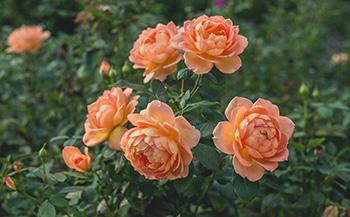 Though some find it heartbreaking to forage roses because of their beauty, they are one of the plants that you can get a lot of benefit from. Roses are available around the world, either wild or cultivated. Many rose varieties are edible. However, make sure that they are not sprayed with chemicals before you forage them.
Though some find it heartbreaking to forage roses because of their beauty, they are one of the plants that you can get a lot of benefit from. Roses are available around the world, either wild or cultivated. Many rose varieties are edible. However, make sure that they are not sprayed with chemicals before you forage them.
Benefits: Rose has many uses from skincare to depression and anxiety to weight loss, among many others.
How to use it: Concoct a rose petal tea by infusing 2-4 tsp of rose petals in 1 cup of boiling water. Steep for 5-15 minutes and strain. Enjoy the drink.
Related: Rose Petal Salve Recipe
Wild Violets (Viola sororia or Viola odorata)
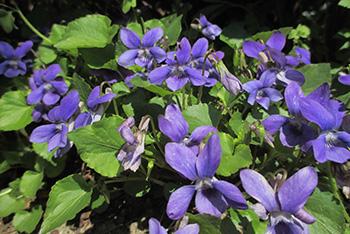 Wild violets bloom early in the spring. It provides many benefits that make it a good plant to forage. You can also see them almost everywhere! While the name suggests violet blooms, they can also have various color flowers such as blue, white, yellow, or even multi-colored. But the yellow violets are not often foraged as they have laxative properties. Violets have basal rosette heart-shaped leaves with dropping 5-petal flowers.
Wild violets bloom early in the spring. It provides many benefits that make it a good plant to forage. You can also see them almost everywhere! While the name suggests violet blooms, they can also have various color flowers such as blue, white, yellow, or even multi-colored. But the yellow violets are not often foraged as they have laxative properties. Violets have basal rosette heart-shaped leaves with dropping 5-petal flowers.
Benefits: The leaves and flowers are extremely rich in Vitamin C. The leaves also act as a blood cleanser and contain antioxidant and anti-inflammatory properties. It helps in the treatment of coughs and colds, varicose veins, eczema, and bug bites.
How to use it: To make a violet cough syrup, fill 1/3 of a mason jar with either fresh or dried wild violet leaves. Add cold water to soak the leaves and place them inside the fridge overnight. Simmer the mixture for 15 minutes the following morning. Strain and measure the liquid. Using very low heat, stir in raw honey and the violet liquid until thoroughly mixed. Use 2-3 parts, honey, for every 1 part violet. Do not let the mixture simmer or boil as it will destroy the benefits of honey. Pour over into a sterilized jar and cover with a lid. Store in a fridge. The syrup will last for about a month. To use, give 1-2 tsp to children and 1 tbsp to adults, 3-5 times daily.
Wild Geranium (Geranium maculatum)
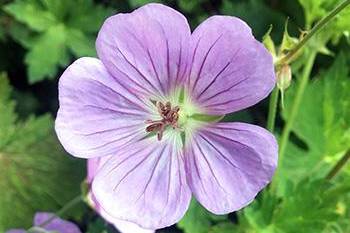 You can find wild geranium in dry and shady places, meadows, and deciduous woodlands. The plants are native to Eastern North America. It has 5-inch leaves that are opposite each other. The flowers are 1 to 2 inches in width, and 5 purple petals per flower. There will be around 2-10 flowers per plant.
You can find wild geranium in dry and shady places, meadows, and deciduous woodlands. The plants are native to Eastern North America. It has 5-inch leaves that are opposite each other. The flowers are 1 to 2 inches in width, and 5 purple petals per flower. There will be around 2-10 flowers per plant.
Benefits: Wild geranium has astringent and hemostatic abilities making them perfect for wound care and healing. The leaves and roots are also used for sore throats, hemorrhages, and cholera treatment. Some also use wild geranium to help treat diarrhea.
How to use it: To make tea, boil 2 cups of water and add 2 tbsp of dried leaves and stems. Remove from heat and steep for 10 minutes or so. You can drink up to 3 cups each day for diarrhea, inflammation, and liver health.
Sorrel (Rumex acetosa)
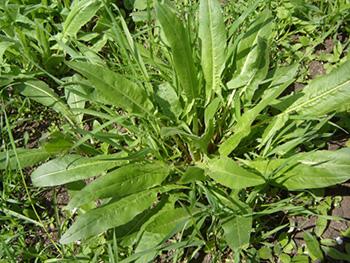 Sorrel is common in grasslands all year round. It thrives throughout Europe and in some parts of Central Asia. You can also find it in North America, Australia, and New Zealand. The key to identifying this plant is the pointed tails at the base of the leaf. The leaves are also shiny and arrow-shaped. Sorrel has spikes of small red and yellow flowers, with the flower stem visible during the summer months only.
Sorrel is common in grasslands all year round. It thrives throughout Europe and in some parts of Central Asia. You can also find it in North America, Australia, and New Zealand. The key to identifying this plant is the pointed tails at the base of the leaf. The leaves are also shiny and arrow-shaped. Sorrel has spikes of small red and yellow flowers, with the flower stem visible during the summer months only.
Benefits: Sorrel can be used to reduce pain and swelling of nasal passages, treat bacterial infections, and also acts as a diuretic.
How to use it: Sorrel leaves are edible whether you eat them raw or cooked. For eating raw, however, make sure to look for younger and tender leaves. You can use older leaves for soups and sauces. The easiest way to make a sauce out of sorrel leaves is to cook it in olive oil just like pesto.
Mullein (Verbascum thapsus)
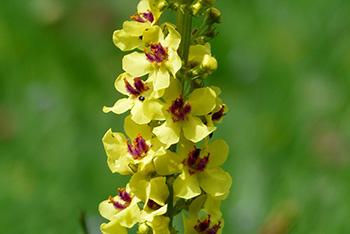 Mullein is a common plant that grows worldwide across all cultures from America and Europe to Asia and Africa, and everywhere in between. You can easily find them in pastures, prairies, and roadsides. Mullein can grow very tall with a pole-like stem full of yellow flowers. However, during its early stages, it’ll produce a rosette of small, fuzzy leaves.
Mullein is a common plant that grows worldwide across all cultures from America and Europe to Asia and Africa, and everywhere in between. You can easily find them in pastures, prairies, and roadsides. Mullein can grow very tall with a pole-like stem full of yellow flowers. However, during its early stages, it’ll produce a rosette of small, fuzzy leaves.
Benefits: Mullein acts as an expectorant and antispasmodic. It also helps with ear infections, swollen glands, and bruises.
How to use it: Smoking mullein helps treat respiratory ailments. However, take note that smoking isn’t intended for long-term use. In a small bowl, grind 2 tbsp of dried mullein leaf, 2 tsp of dried thyme leaves, and 2 tsp of dried peppermint leaves. Add a spray of water enough to moist them, but not to soak. Add the blended herbs to your smoking pipe. Smoke as needed, but do not exceed every 2 hours of smoking. Smoking herbs should be limited to less than 2 weeks only, and if symptoms persist, consult your doctor.
Related: Healing Herbs You Can Smoke
Wild Asparagus (Asparagus officinalis)
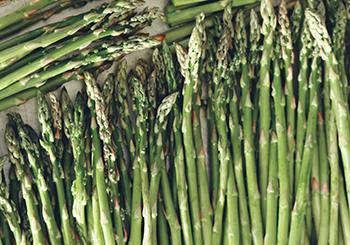 Wild asparagus may be rare compared to other plants you can forage in this list. However, you can still find them in areas where there is water since they like to grow in moist soil. You can easily identify wild asparagus because it looks very similar to the asparagus sold in stores. They are the same with the only difference of the store-bought ones as cultivated.
Wild asparagus may be rare compared to other plants you can forage in this list. However, you can still find them in areas where there is water since they like to grow in moist soil. You can easily identify wild asparagus because it looks very similar to the asparagus sold in stores. They are the same with the only difference of the store-bought ones as cultivated.
Benefits: Asparagus is a great source of antioxidants. It is also a healthy food to eat for pregnant women, it improves digestive health, and lowers blood pressure.
How to use it: My most favorite way of eating asparagus is to simply microwave them with a small amount of water to make them tender. Afterward, I will season it with butter and a squeeze of lemon. Some prefer grilling it and eating it with or without sauce. The creativity depends on you!
Wild Garlic (Allium ursinum)
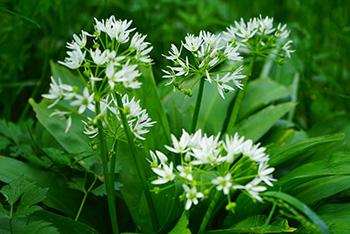 Native to Europe, this delicious pick entices humans all around the world with its garlicky flavor. It is also one of the easiest plants to recognize during the foraging season. It has bright green leaves with a pointed shape, small white bulbs, white 6-pointed star-shaped flowers, and of course, its natural garlic scent. Garlic is known to improve heart health and reduce the risk of stroke. It also has antibacterial and antibiotic properties. Additionally, garlic is rich in Vitamins A and C, and many other minerals.
Native to Europe, this delicious pick entices humans all around the world with its garlicky flavor. It is also one of the easiest plants to recognize during the foraging season. It has bright green leaves with a pointed shape, small white bulbs, white 6-pointed star-shaped flowers, and of course, its natural garlic scent. Garlic is known to improve heart health and reduce the risk of stroke. It also has antibacterial and antibiotic properties. Additionally, garlic is rich in Vitamins A and C, and many other minerals.
How to use it: The entire plant is edible and can be used. However, it is best to leave the bulb alone so as not to disturb the soil. You can use the leaves as a primary ingredient for pesto. Simply mix it with crushed walnuts, parmesan, and olive oil to create your own pesto sauce. You may also use the flowers as a dish garnish for soups and salads.
Garlic Mustard (Alliara petiolata)
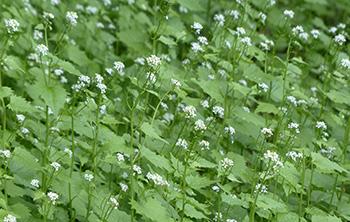 Garlic mustard is a common weed throughout Europe and North America. It is an invasive weed, which means once you find it in one place, expect to find many of it in the area. During its first year, the plant will have a basal rosette of round or kidney-shaped and scalloped-edge leaves. As it grows, the leaves become more triangular and smell like garlic. The small, white, and 4-petal flowers start to appear during the second year. Seed pods from underneath the stem contain small black seeds.
Garlic mustard is a common weed throughout Europe and North America. It is an invasive weed, which means once you find it in one place, expect to find many of it in the area. During its first year, the plant will have a basal rosette of round or kidney-shaped and scalloped-edge leaves. As it grows, the leaves become more triangular and smell like garlic. The small, white, and 4-petal flowers start to appear during the second year. Seed pods from underneath the stem contain small black seeds.
Benefits: Garlic mustard is high in fiber, vitamins A, B-carotene, C, and E. It is also rich in iron, calcium, magnesium, and zinc. Moreover, it contains high levels of omega-3 fatty acids and copper.
How to use it: You can substitute the leaves of garlic mustard instead of basil in your favorite pesto recipe. Or you may also toss it on your salads if you want to have it raw.
Burdock (Arctium)
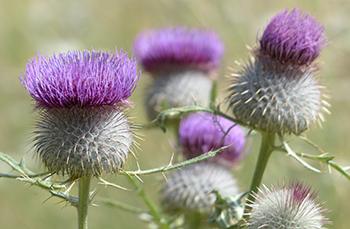 Burdock lives in open fields, roadsides, trails, and disturbed soils. You can almost find them anywhere since they are invasive weeds. Common burdock (Arctium minus) and greater burdock (Arctium lappa) grow depending on their natural habitat. Common burdock has hollow and lightly grooved lower leaf steam, while the greater burdock has solid and deep groove stem. The flowers of each variety also differ with common burdock having ½ to 1-inch wide flowers that are either stalkless or having short stalks. Greater burdock, on the other hand, has larger flowers and longer stalks.
Burdock lives in open fields, roadsides, trails, and disturbed soils. You can almost find them anywhere since they are invasive weeds. Common burdock (Arctium minus) and greater burdock (Arctium lappa) grow depending on their natural habitat. Common burdock has hollow and lightly grooved lower leaf steam, while the greater burdock has solid and deep groove stem. The flowers of each variety also differ with common burdock having ½ to 1-inch wide flowers that are either stalkless or having short stalks. Greater burdock, on the other hand, has larger flowers and longer stalks.
Benefits: Mostly, it is the burdock root that is used for medicinal purposes as it is known to help manage diabetes, prevent infections, purifies the blood, and reduces inflammation. It also has antioxidant and diuretic effects. But of course, you can also make use of the leaves and stalks if you want to.
How to use it: To make burdock tea, add 1 tsp of dried burdock root to a teacup. Pour 1 cup of boiling water and steep for 5-8 minutes depending on how strong you like the tea. Strain and enjoy the drink.
Catnip (Nepeta cataria)
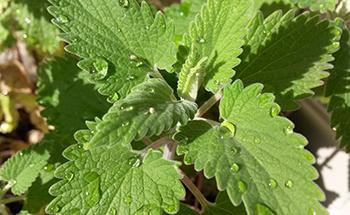 Catnip grows all year round in open meadows and fields. They love the sun so much so you can probably see them where the sun shines bright. It has jagged heart-shaped leaves with thick, fuzzy stems. The flowers are clumped in large clusters, and they can either be white or purplish in color. Another thing you can do to identify it is to pinch a leaf and smell it. Catnips have a minty scent.
Catnip grows all year round in open meadows and fields. They love the sun so much so you can probably see them where the sun shines bright. It has jagged heart-shaped leaves with thick, fuzzy stems. The flowers are clumped in large clusters, and they can either be white or purplish in color. Another thing you can do to identify it is to pinch a leaf and smell it. Catnips have a minty scent.
Benefits: Catnip tea is useful in treating anxiety and nervousness. It also helps with insomnia, indigestion, cramping, and gas. This amazing medicinal plant has also been used as a diuretic, and as a remedy for arthritis, fever, coughs, and hives.
How to use it: Add 2 tsp of dried catnip leaves or flowers in a cup. Pour 1 cup of boiling water over the herbs. Add lemon juice and honey to taste. Steep for 10 to 15 minutes, and drain.
Motherwort (Leonurus cardiaca)
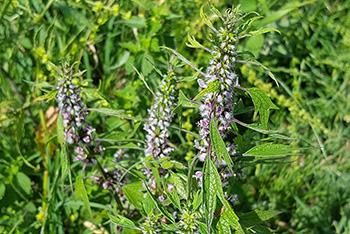 Motherwort needs to be harvested when it is in full bloom. You can often find this plant in gardens and yards. They also grow in vacant lots, roadsides, and disturbed soils. To recognize the plant, look for an upright prickly bush. Flowers grow up the stem, alternating with the leaves. Blooms are hairy and in various colors of purple, pale pink, or white. Motherwort leaves are dark green on top, while the undersides are pale in color. The leaves are lobed into three parts and have an oak-shaped contour.
Motherwort needs to be harvested when it is in full bloom. You can often find this plant in gardens and yards. They also grow in vacant lots, roadsides, and disturbed soils. To recognize the plant, look for an upright prickly bush. Flowers grow up the stem, alternating with the leaves. Blooms are hairy and in various colors of purple, pale pink, or white. Motherwort leaves are dark green on top, while the undersides are pale in color. The leaves are lobed into three parts and have an oak-shaped contour.
Benefits: Motherwort acts as a uterine stimulant and helps ease menopausal symptoms. It also improves heart health by easing palpitations and irregularities. Most people use motherwort for its anti-anxiety effect.
How to use it: You can make use of fresh or dried flowers in salads and soups. For a motherwort decoction, finely chop ½ cup of fresh motherwort root. Add it to a stainless steel pot with 3 cups of water. Bring to a boil. Simmer uncovered for 20 minutes. Strain into a mug. This can be stored in the fridge for 2 days. You can drink 1 to 3 cups daily.
Takeaway
Foraging medicinal plants is an inexpensive way to help with several ailments. These natural remedies are the gifts of Mother Nature to us. However, one should be cautious when foraging, especially when identifying the plants you want to forage. Make sure that you do not forage poisonous and toxic plants. Also, avoid harvesting plants that you are unsure of since some may be laced with chemicals unknown to you. We should be responsible enough not to harm the soil and the plants themselves while foraging.
It is also important to know the different side effects and contraindications of these plants. Some people with underlying medical conditions and those who are pregnant need to be cautious in using these remedies. That is why it is always best to consult your doctor before starting any of these natural remedies to ensure that they do not pose harm to your health.
You may also like:
Homemade Lion’s Mane Tincture for Brain Fog
Just Like Xanax, The Anxiety Relieving Plant That Grows In Your Backyard (Video)
The Driveway Weed Similar To Vicodin
Burdock: The Annoying Weed That Can Save Your Life
Delicious Recipes Using Cattails: The Supermarket of the Swamp


Hi there my name is Terry Buddell I bought the online version of your lost Herbs boo, which is great, by the way,However its too long to download and read and awkward to read on line or on my phone…I see you had a hard copy in the kitchen on your advert,What do I have to do to obtain the hard copy real book version, Id really love a copy !!!
Hi Terry,
Thank you for supporting our work.
Please check your email address. I have sent you an email with more information about your book order.
God bless!
How many of these are listed in The Forager’s Guide to Wild Foods?
OMG!!! best purchase i made this summer. i already went out with my kids to look for mushrooms and found some super rare reishi! i so recommend it!
Can someone tell me about benefits of moringa?
Hi Suna,
Thank you so much for your comment.
You can find more information in the article below:
https://thelostherbs.com/moringa/
I too am looking for a hard copy of The Foragers Guide to Wild Foods. I live in the mountains of western Montana and recognize many medicinal plants, but I don’t really know that much about foraging fir edibles. Do you have a website? I love my The Lost Book of Herbal Remedies
Hi Evelyn,
Thank you so much for your interest in our work.
The Forager’s Guide to Wild Foods is available both in digital and physical copy. It comes with 3 digital-only Bonuses: Wilderness Survival Guide, Healing Yourself at Home with Household Items, and 104 Lost Foods Items that Can Be Used for Survival.
You can purchase the book using this link below:
https://www.digistore24.com/redir/391224/globalbro/corinamail
God bless!
Hello, I have a question. It sounds crazy, but , Is it safe to eat the plantains that grow natural in my yard? I think the lawn service uses pesticides and weed killer and I’m sure it’s not the most natural of remedies. They always grow back but how long is the soil effected by the poison?
Can I plant and grown my own? What source?
hi! Question-I noticed that you don’t include Asiatic dayflower in your book! Even though easily collected and is edible and medicinal! Any particular reason why not?